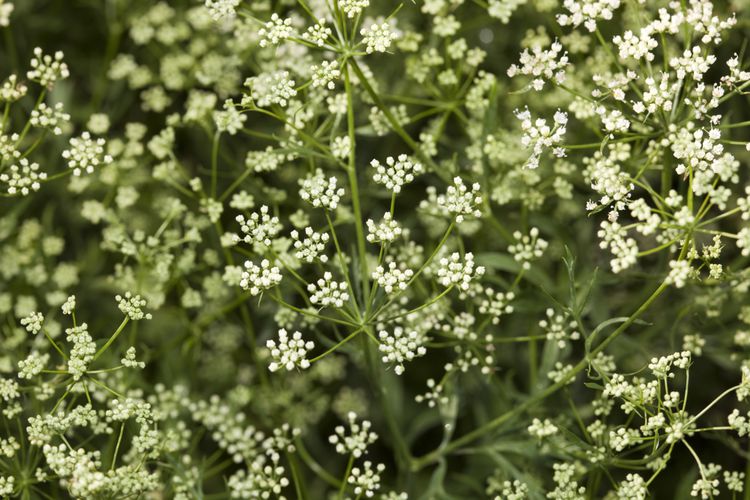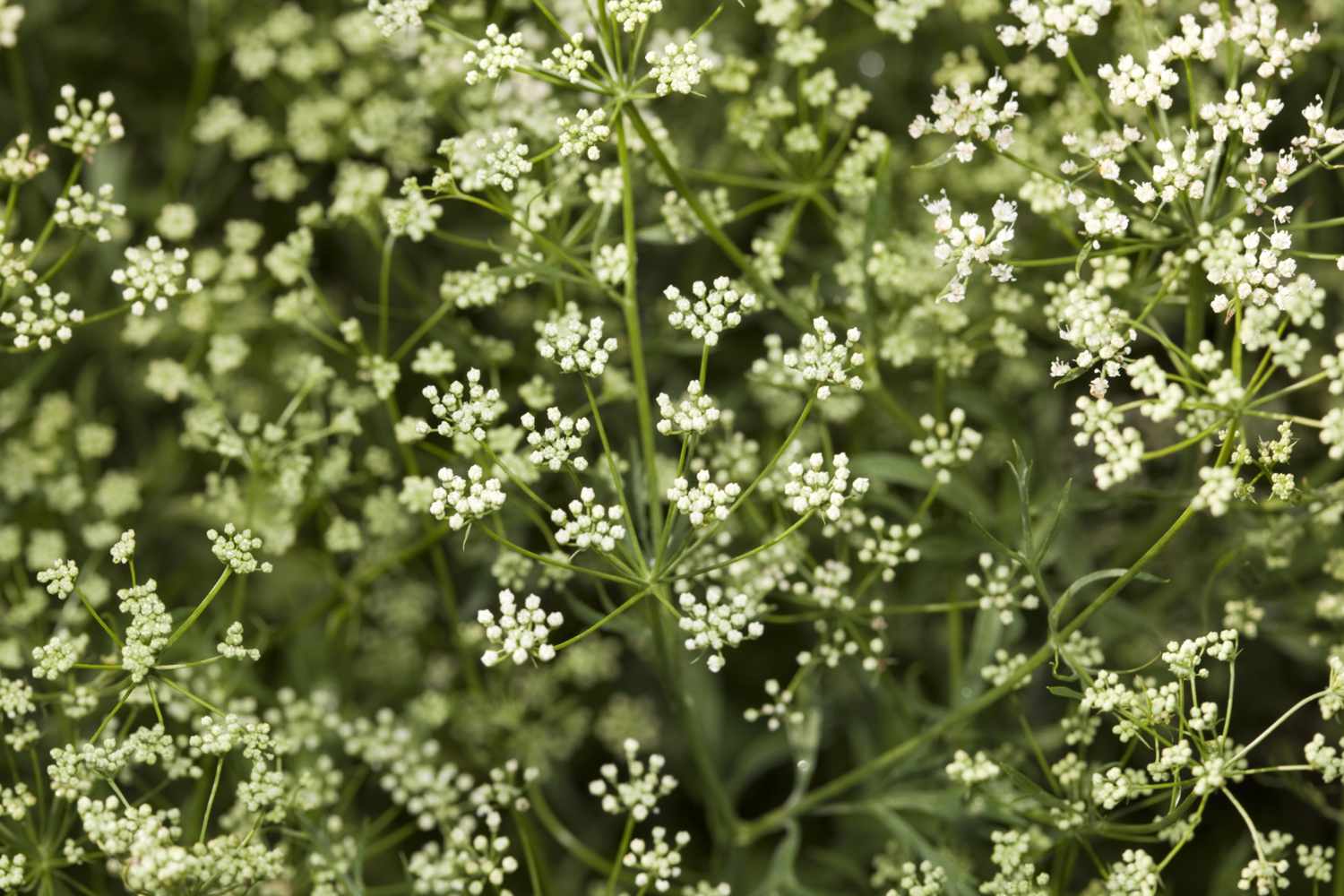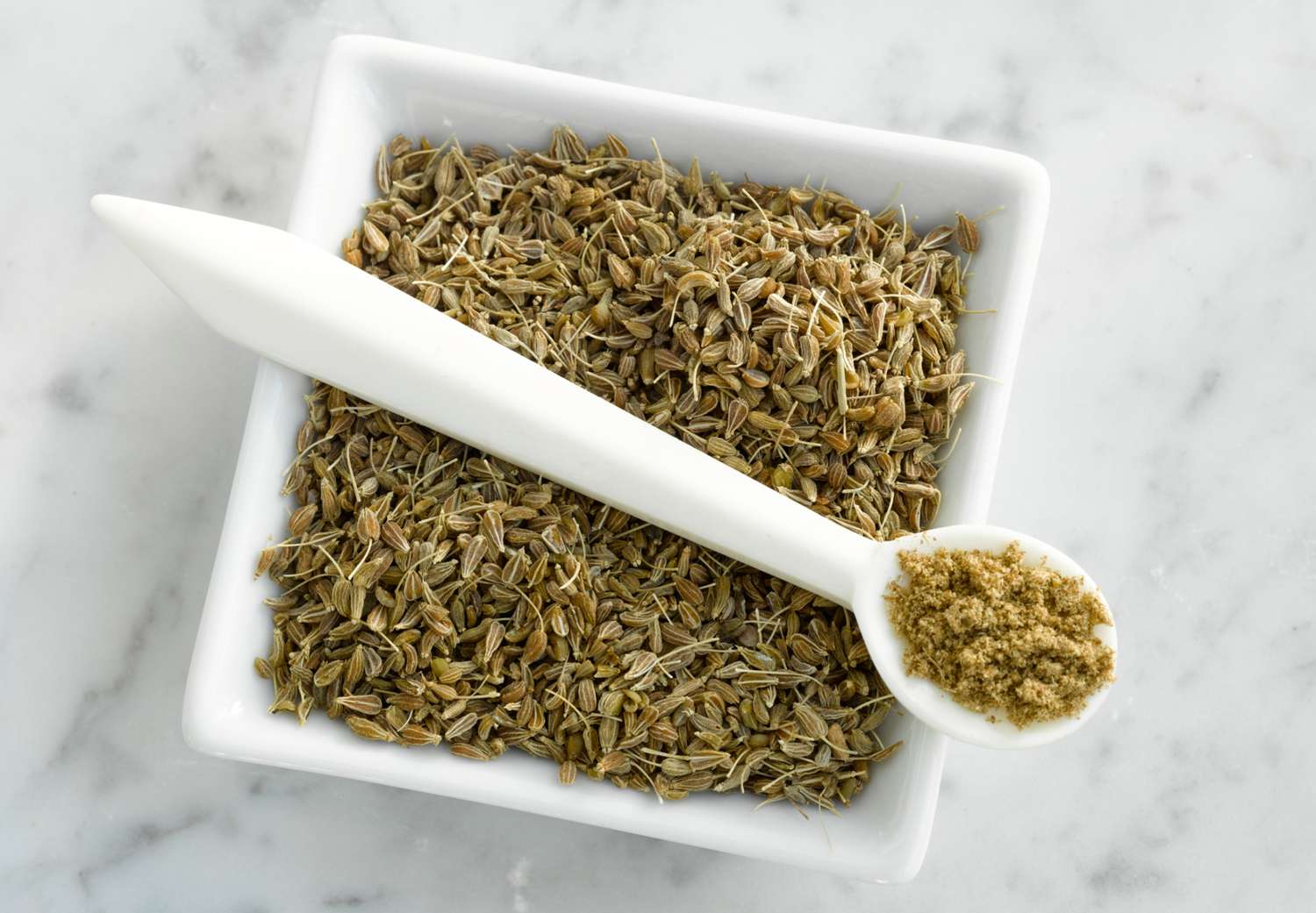Contents

Anise (Pimpinella anisum) is a charming annual herb that produces flowers and is well-known for its distinct licorice aroma. Originating from the Middle East and Northern Africa, it has a long history of use in various culinary and medicinal practices across different cultures. Today, numerous gardeners globally opt to cultivate this delightful, easy-to-care-for herb, collecting its seeds for culinary applications, baking, tea, and various other uses.
The anise plant is often mistaken for star anise, which is actually a sizable evergreen tree, unlike the small green herb that is anise. Both plants yield seeds that find their applications in culinary practices, particularly in baking. While they both emit a similar licorice fragrance, they are distinct species and should not be confused with one another. Additionally, there is a mix-up with anise hyssop, a plant that bears purple flowers and is also completely different, yet has a similar scent.

Applications and Advantages
Anise is cherished globally across various cultures for its numerous advantages as an herb. In addition to its distinctive, sweet, licorice aroma that is instantly familiar to many, cultivating anise offers a range of benefits and applications.
- It can be utilized for the production of liqueurs.
- Ground seeds can be utilized to produce a powerful oil that can be incorporated into soaps, potpourris, and various other products.
- Ground seeds can be incorporated into various recipes for both cooking and baking. Additionally, they can be utilized to prepare a tea.
Anise Wellness
Here are several essential criteria for the successful cultivation of anise:
- Utilize soil that is loose, loamy, and has good drainage.
- Choose a location that receives ample direct sunlight and enjoys extended sunny days to maximize your chances of successfully harvesting seeds.
- Not every USDA zone is suitable for successfully cultivating anise for seed harvest, yet it can still be grown for its various other advantages.
- Water the plant two times a week while it is still young, and reduce the frequency as it grows older.
- While fertilizer isn’t essential, consider applying some compost in early July.
- As the plant grows and the seeds become heavier, you can provide support by propping them around a stick or by placing a tomato cage over them.
Light
Anise flourishes optimally in regions characterized by extended sunny days and may face challenges in locations with prolonged cloudy weather. While it can still grow and prosper in partial sunlight, it will not yield seeds. For seed production, anise requires full, direct sunlight and extended hours of sunshine.
Soil
Anise thrives in loamy soil that is well-drained and allows for ample water movement. This herbaceous annual is not suited for overly compacted or sandy soil conditions.
Water
This plant needs a minimal to moderate level of water, so it’s important to prevent overwatering. After sowing the seeds, water the plants twice a week until they grow to approximately 8 inches in height. After that, reduce the frequency of watering.
To prevent mildew and other problems, apply water directly to the soil instead of the leaves, and aim to water in the morning whenever you can.
Climate and Moisture Levels
To ensure optimal growth and full seed maturation, anise thrives in temperatures typically ranging from 45 to 75 degrees Fahrenheit. While the plant can tolerate slightly higher temperatures, it is not adversely affected. Although it can endure brief dry spells, the best seed production occurs within this temperature range and with regular watering.
Fertilizer
Once it starts to grow vigorously, anise generally doesn’t need additional fertilization to flourish. A bit of compost added earlier in the summer can be beneficial, but not much else is needed afterward.
Growing Anise from Seeds: A Step-by-Step Guide
Anise typically does not do well when moved as a seedling, making seed planting the most effective method. This approach not only ensures a better chance of success but also yields additional seeds for the following planting season. Decide on the planting location, whether in a container or in the ground. It’s crucial to ensure the soil temperature is appropriate for seed germination, ideally at least 60 degrees Fahrenheit.
Anise seeds are quite tiny, so utilizing a seed syringe or mixing the seeds with a small amount of sand can simplify the process of transferring them into the soil. Plant the seeds in rows, ensuring they are spaced 2 to 3 feet apart, with approximately 12 seeds for every foot in the row. It’s important to have loose, well-draining soil, and the seeds should be planted to a depth of about half an inch.
Overwintering
Anise is classified as an annual in all USDA zones, completing its entire life cycle within a single growing season. Consequently, there is no pressing need for overwintering. However, for those in regions with early cold weather who wish to prolong the life of their anise, consider planting it in a container. This allows you to bring the plant indoors before the first frost of autumn. Ensure you place it in a warm location near a window to provide ample sunlight.
Frequent Insects and Illnesses
Similar to other plants, anise may be susceptible to various pests and diseases that can harm or diminish its health, potentially preventing you from harvesting seeds. Here are a few typical problems to be aware of:
- Rodents, particularly mice, are drawn to the sweet aroma of this herb, often attempting to consume its seeds. To prevent this, ensure the seeds are elevated as they develop, and gather them promptly once they are ripe.
- Cutworms are notorious garden nuisances that can invade your anise plants, causing significant harm or even death to them. A simple way to protect your plants is to create a barrier around their stems, preventing the worms from accessing them. One effective method is to take a toilet paper or paper towel tube, cut a slit down its length, and wrap it around the stem to deter the cutworms.
- Aphids are among the most troublesome pests for gardens, posing a significant threat to anise plants. Numerous strategies exist for combating these pests, such as using neem oil, garlic spray, and soapy water. Experiment with different approaches to determine which works best for your garden.
- Downy mildew is a widespread affliction affecting various plants, characterized by yellow or white patches on the upper surfaces of leaves or a fluffy growth on the underside. To manage or prevent this issue, it’s advisable to trim any lower leaves that come into contact with the ground and to remove any excess foliage that may be overcrowding neighboring plants. Additionally, water the soil directly instead of the leaves. Spraying with neem oil can also be beneficial.

Methods for Collecting Anise Seeds
A key objective for many cultivating anise is to collect its seeds at the season’s conclusion for use in baking, cooking, teas, and medicinal purposes, as well as to ensure the herb can be replanted in the coming years. Provided that the plant has received ample sunlight throughout the season and is flourishing, this process is relatively straightforward.
Once your plant has produced seeds, its season has concluded, and it’s time to remove it, collect the seeds, and compost the remains. Alternatively, you can leave the spent plants in your garden, as they might self-seed and reappear in the next growing season.
If you require seeds for baking or cooking or wish to thin your plants, you can gather them earlier in the season. Once the seed heads transition from green to gray, indicating they are fully developed, you can snip them off. Use a large paper bag, making a few air holes in the sides, and place the seed heads inside. Allow the bag to sit undisturbed for a week or two to dry. The seeds will gradually fall off and collect in the bag. After some time, you can gently shake the bag to release any remaining seeds.
After harvesting, you can prepare your seeds for storage or culinary use by lightly toasting them in a pan for a few minutes. While toasted seeds are not suitable for planting, they can be kept in an airtight container for up to a year, making them a great addition to your kitchen or home remedy collection.


 Step-by-Step Guide – Build Your Own Paver Patio in One Day
Step-by-Step Guide – Build Your Own Paver Patio in One Day Essential Information About Installing Laminate Flooring in Basements
Essential Information About Installing Laminate Flooring in Basements Tips for Cultivating and Maintaining the Century Plant
Tips for Cultivating and Maintaining the Century Plant